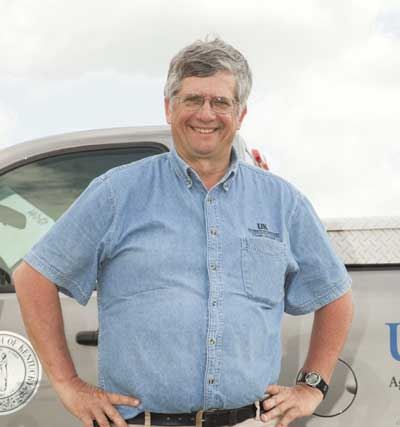|
Farmers Learn To Spot Surfur Deficiency In Wheat
BETTY VALLE GEGG-NAEGER
MidAmerica Farmer Grower
PRINCETON, KY.
Sulfur and its relation to wheat nutrition in Kentucky was addressed recently by Dr. John Grove, soil fertility specialist with the UK College of Agriculture.
“We’ve summarized our existing research on sulfur for wheat, corn and soybean, and in general, we have not seen much in the way of a positive benefit to corn or to soybean,” Grove began. “We had 72 studies that involve sulfur over a period of about five years. We did see, however, some response in wheat, which amounted to about a three percent increase in yield, which was enough to make us wonder if we need to pay more attention. So my main message today is to make producers aware that there is no good soil test for sulfur yet for the state of Kentucky; but plant tissue analysis can be a guideline, and that testing can be used to rule out other nutrient elements that might otherwise be problematic.”

Dr. John Grove, soil fertility specialist with the UK College of Agriculture
discusses sulfur and its relation to crop nutrition especially in wheat.
Photo by John LaRose, Jr.
For example, if a tissue test is done and it is low in three elements with one of them sulfur, it could be that the soil analysis for the magnesium or the zinc helps rule out those as sources of the problem.
“We’re also working on a strategy for producers to scout their fields, and learn whether or not they see a problem with sulfur,” he continued. “Farmers need to look in the eroded areas that are lower in soil organic matter, as some of our subsoils are more likely to have a sulfur deficiency. Also, some of our subsoils tend to hang onto sulfate, retaining it from one year to the next.
“With these messages, we hope our producers are able to understand better which fields they need to watch more closely for sulfur deficiency, and which fields they can put on the back burner a little longer before they watch for another problem nutrient,” Grove summed. ∆
BETTY VALLE GEGG-NAEGER: Senior Staff Writer, MidAmerica Farmer Grower
|
|